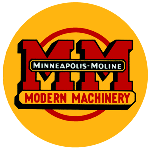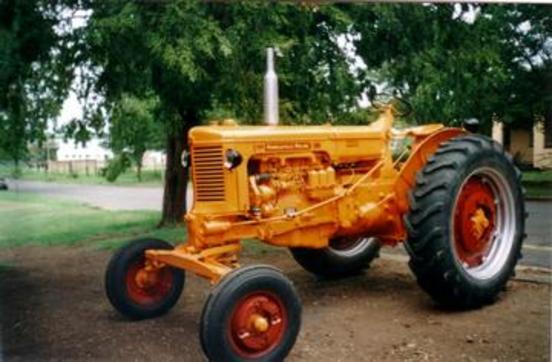|
A Brief History Of The
The Minneapolis-Moline U was the company's largest row-crop tractor in 1941 and was rated as a 3-4 plow tractor. It could be equipped with dual front wheels or a single front wheel. The U was also available as a standard-tread tractor. The transmission provided five forward speeds. The U developed 45.3 belt horsepower with its gasoline engine when tested at Nebraska in 1939 and 48.8 belt horsepower with its LP-gas engine in 1948. Both tests were corrected for temperature and barometric pressure.
In 1941, Minneapolis-Moline introduced a liquefied petroleum gas (LP-gas) engine for its model U series tractors and was the "first tractor manufacturer to do so." The 4-cylinder, 283-cubic-inch LP-gas engine with a rated speed of 1,275 rpm was built with the same 4.25-inch bore and 5.00-inch stroke as the gasoline engine. However, the compression ration was 6.8 to 1, instead of 5.4 to 1 for the gasoline engine. The Minneapolis-Moline engines were unique with the cylinders and heads cast in pairs and attached to the crankcase by studs.
Other tractor manufacturers soon followed Minneapolis-Moline's lead and began to offer LP-gas engines as an option. By the late 1950s and early 1960s, most tractor builders offered a choice of gasoline, diesel, or LP-gas engines. The Minneapolis-Moline G955 and G1355 were the last new models of MM tractors, being introduced in 1972, and they were available with a choice of 6-cylinder LP-gas or diesel engines.
Minneapolis-Moline pioneered the concept of the closed
The tractor was equipped with automotive features such
In 1963 Minneapolis-Moline became a wholly owned sub-
The Cockshutt and Minneapolis-Moline lines were blend-
Our Research Source
| |||||||||||||||||





